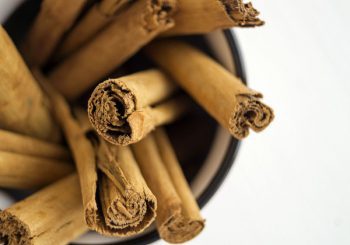By Sayer Ji
Contributing writer for Wake Up World
If you live in North America or Europe that jar of “cinnamon” in your cupboard is probably not truly cinnamon at all, but a very similar spice known as cassia or “bastard cinnamon.”
True cinnamon is usually labeled “Ceylon cinnamon” and comes principally from Sri Lanka (called Ceylon in colonial times), India, Madagascar, Brazil and the Caribbean. Cassia, on the other hand, is often designated as “Chinese cinnamon” or “Saigon cinnamon” and comes principally from Indonesia, China, Vietnam, Japan and Korea.
Cinnamon is one of the oldest and most popular spices, and has been used for millennia both for its flavoring and medicinal qualities. In ancient Egypt, it was used to fill body cavities of corpses as an embalming agent. In ancient Rome it was considered so valuable that the Emperor Nero burned a year’s supply on his wife’s funeral pyre as proof of his devotion to her.
Ceylon cinnamon is more expensive and more difficult to find in North America where most spices labeled cinnamon are actually the cheaper cassia. Sweeter, lighter and more refined than cassia, true cinnamon is most suitable to flavoring desserts rather than more robust, savory dishes, which can handle the heavier cassia.
Besides flavor, the most important distinction between the two spices, however, is in their levels of coumarin, a natural compound that acts as a blood thinner when ingested.
Cassia has much higher levels of coumarin than true cinnamon. Patients on blood thinners such as warfarin (trade name Coumadin) are often advised to limit their intake of cinnamon, but this generally applies to cassia more so than to real cinnamon.
Both types of cinnamon are excellent sources of the trace mineral manganese, which is an important activator of enzymes essential to building healthy bones as well as other physiological processes, including carbohydrate and fat metabolism.
They are also both very good sources of dietary fiber, iron and calcium. The combination of calcium and fiber is thought to be helpful in reducing the risk of colon cancer, lowering cholesterol levels and relieving constipation and diarrhea.
Whatever you do, makes sure to buy all your spices USDA certified organic because many conventional brands irradiate their raw material with intense doses of radiation. Learn more about this invisible nuclear threat within non-organic food.
Six Reasons to Get More Cinnamon in Your Diet
1. Lowers Blood Sugar Levels
Cinnamon has been shown to normalize blood sugar levels in Type 2 diabetics by improving the ability to respond to insulin. It does so in part by slowing the rate at which the stomach empties after eating as evidenced by a study in which people ate about a cup of rice pudding with and without about a teaspoon of cinnamon. Adding the cinnamon slowed the rate the stomach emptied from 37% to 34.5% and significantly slowed the rise in blood sugar levels. Even less than a half of a teaspoon a day reduces blood sugar levels in Type 2 diabetics.
2. Favorably Alters the Blood Lipid Profile
Diabetics can also reduce their risk factors associated with cardiovascular disease by consuming even one daily gram (about 1/3 teaspoon) of cinnamon. One 2003 USDA study found that after 40 days of eating between just 1 and 6 grams of cinnamon (about 2 teaspoons), Type 2 diabetics were not only able to reduce their blood sugar levels by 18% to 29%, but also lowered their triglycerides by 23% to 30%, their LDL cholesterol by 7% to 27% and total cholesterol by 12% to 26%. [Note: the focus on LDL cholesterol particles by number versus their quality is misleading. Learn more about the cholesterol myth here.]
3. Supports Healthy Blood Clotting
Much research has been devoted to cinnamon’s effect on blood platelets, which contribute to clotting. It helps thin the blood and prevent unwanted clumping of platelets. It is so effective as an anti-coagulant that patients taking prescription blood thinners are warned not to take cinnamon in concentrated form such as supplements or extracts. Cassia has higher concentrations of the blood-thinning agent coumarin, which is all the more reasont to opt for the Ceylon form.
4. Fights Bacteria and Fungus
Ayurvedic medicine has long used cinnamon for it anti-microbial qualities to support the immune system and prevent colds and flu. It has been proven to help stop the growth of bacteria, fungus and the common yeast Candida. One study showed that it is an effective alternative to chemical food preservatives and just a few drops of essential oil of cinnamon added to refrigerated carrot broth prevented the growth of foodborne pathogens for up to 60 days.
5. Boosts Memory and Protects the Brain
Chewing cinnamon flavored gum or just smelling the sweet spice has been found to improve brain activity. Research led by Dr. P. Zoladz and presented at the 2004 meeting of the Association for Chemoreception Sciences, in Sarasota, Florida, concluded that cinnamon enhances cognitive processing and was found to improve test subjects’ scores related to attention, memory and visual-motor speed when working at a computer.
A 2011 study suggested that it may have a role in reducing the kind of chronic inflammation that leads to various neurodegenerative diseases, such as Alzheimer’s disease, Parkinson’s disease, multiple sclerosis, brain tumor and meningitis.
6. Improves Digestion
In Traditional Chinese Medicine, cinnamon has been used for flatulence, nausea and diarrhea. It is also believed to improve the body’s ability to digest fruit, milk and other dairy products.
Both cassia and real cinnamon are often labeled the same in North America. The true Ceylon version will be more expensive, and it will be a lighter shade of brown, a finer powder and have a sweeter scent. When buying the sticks, known as “quills,” keep in mind that, generally, cassia will be thicker and the two ends will be rolled toward each other rather than being rolled in one direction only.
For information on the health benefits of cinnamon, view our database on the topic here.
Recommended Articles by Sayer Ji:
- The Power and Mystery of Melanin Explained
- Cell Phone Induced Bodily Harm: How the Bees Can Help
- The Spice That Prevents Fluoride Destroying Your Brain
- How to Clean Your Arteries with One Simple Fruit
- 7 Healing Uses for Lavender Essential Oil
- From Table to Tomb: Cumin’s Health Benefits Rediscovered
- Why You Should Ditch Sugar in Favour of Honey
- The Love Affair Between Saffron and Humanity: As Ancient as Time Itself
- Why Walnut Resembles the Brain It Nourishes
- Magnesium Puts Psychiatric Drugs to Shame for Depression
About the author:
Sayer Ji is the founder of Greenmedinfo.com, a reviewer at the International Journal of Human Nutrition and Functional Medicine, Co-founder and CEO of Systome Biomed, Vice Chairman of the Board of the National Health Federation, and Steering Committee Member of the Global Non-GMO Foundation.
© 2020 GreenMedInfo LLC. This work is reproduced and distributed with the permission of GreenMedInfo LLC. Want to learn more from GreenMedInfo? Sign up for their newsletter here.

If you've found value in our articles, we invite you to support the release of our brand-new book, "Gratitude Practices for Kids: A Practical Guide for Adults to Instill a Spirit of Appreciation and Positivity in the Next Generation."
"Gratitude Practices for Kids" brings together over 25 innovative and accessible practices designed to enhance gratitude in everyday life. This comprehensive guide is backed by 17 scientific studies, ensuring each concept is grounded in research, underscoring our commitment to nurturing growth, emotional intelligence, and positive interactions between adults and children.
We encourage you to opt for the paperback version to celebrate this new release. Dive into its fresh pages away from digital distractions, allowing you to immerse yourself in the transformative practices it offers.
Over recent years, Wake Up World has faced significant online censorship, which has impacted our financial ability to operate. Moving into book publishing represents a strategic step to secure the ongoing funds needed to continue our mission. By purchasing Gratitude for Kids, you help us keep our content free and accessible to everyone, avoiding needing a paywall. With over 8,500 articles published in the last 13 years, we remain dedicated to keeping our valuable content open to all.









